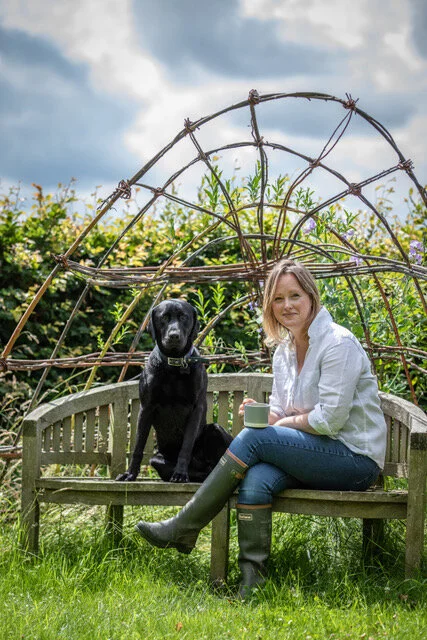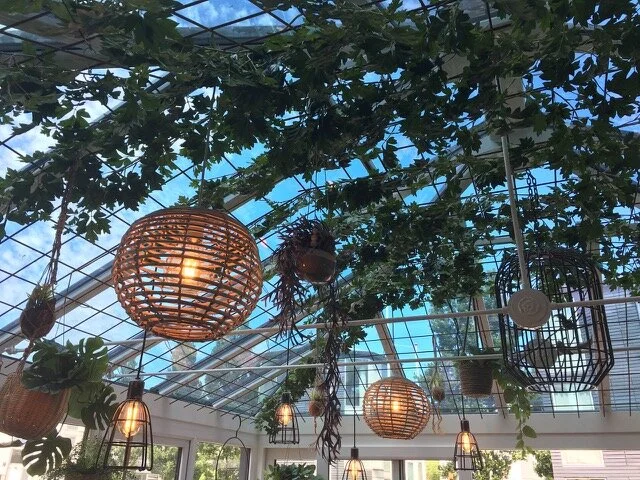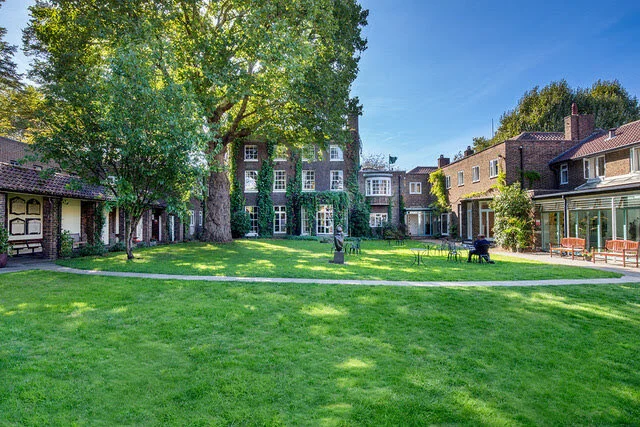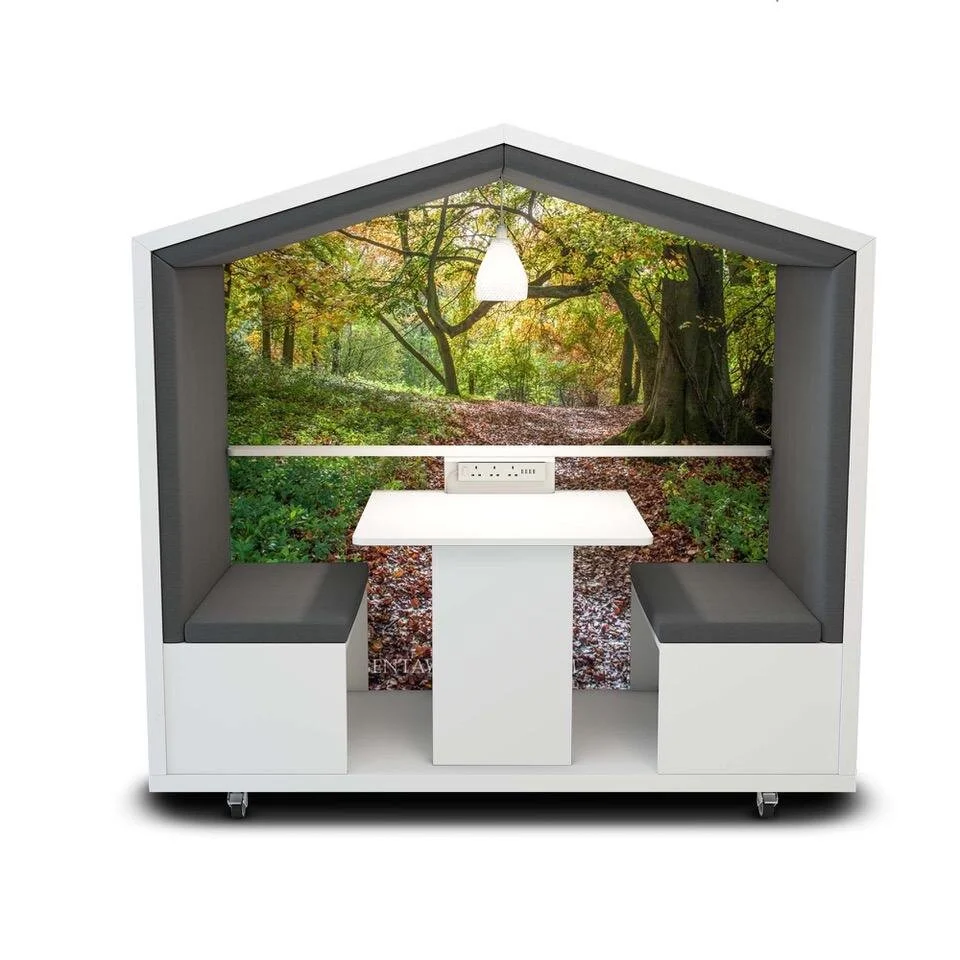Can technology and nature go hand in hand, can we use technology to embrace nature? If so, how? Technobiophilia is a new term coined by writer and researcher Sue Thomas. We speak with her about her book of the same name and also about Nature, Wellbeing in the Digital Age. Quotidian use of our device interaction throws up the most surprising benefits it seems, who would have thought that Grand Theft Auto or FarmVille would give us a potential escape route after work into nature, or how nature found its way into our metaphorical library to be an unspoken lexicon for cyberspace terminology.
Biophilia - A Handbook for bringing the Natural World into your Life
Sally Coulthard, designer and best selling author writes a great column for Country Living “Good Life in the Country.” Her recent book “Biophilia" - You, Nature, Home” is a ‘Handbook for bringing the natural world into your life’ and is one of the most beautifully crafted books I’ve read for years. It feels like you are holding nature in your hands. I was thrilled to interview her and get her take on Biophilia, why it’s important today, why cities and buildings should be weaving biophilic elements into their interior designs and urban planning. We chat about the interconnectedness of nature and our lives, how biophilia embraces many aspects and has many benefits not only from an aesthetic point of view but also environmental and on a more profound level as it reduces negative issues such as stress and improves positive aspects like helping sleep, air quality, nervous systems. The science is overwhelming.
The Conscious Nature Connector
If you are feeling overwhelmed at the thought of going back to work, or which way to turn now, you could well benefit from taking a leaf (excuse the pun) from nature’s book. Deborah Mendes, helps overwhelmed CEOs and business owners del with change and reconnect to their true and powerful selves through connecting with nature. The term biophilia highlights our connection with nature, so I was intrigued to learn more about how Deborah works. From the study of an intricate pine cone to just standing still and feeling strong within ourselves, grounding ourselves, rooting ourselves and expanding outwards, and growing can enable us to adapt, slow down, make atomic changes to help ourselves and those around us have better more productive, peaceful and happy lives.
Sound without Walls - essential improved acoustics in Healthcare
Sound may not be one of the first things we think of in biophilic design but what most people want from the auditory environment is intrinsically linked to nature. Further associations with the natural world are found in our sound preferences. Subjectively many people prefer outdoor sounds, for example the soft sounds of water babbling, leaves rustling and birdsong. However, much of our time is now spent inside and for patients in hospital their stay is often a continuous indoor environment with unnaturally high levels of artificial noise from which there is no escape, not even in sleep, and which are out of our control..
The New Workplace - how to use Biophilic Design
The New Workplace - The office is going to be very different in the future, less about ‘The’ place where you go to do work, it may be more the place where you go to be creative and collaborative. Offices may be used for the more social aspects of work, or those times where you genuinely need to cooperate or collaborate face-to-face. No longer will they be the battery farms of the past. As we emerge from Lockdown things are changing already in the way people work, where they work and the office environments themselves. We speak to Kenneth Freeman, former Head of Innovation at Ambius who has now set up his own consultancy focusing on workplace wellbeing through biophilic design, to ask him how he thinks biophilic design should be used going forward to make workers lives better, not just in the office itself but also at home.
Re-humanising and inspiring the Workplace - For Kenneth, with his background in horticulture, evaluating the effects of biophilic design is essential, helping understand scientifically how and why nature and plants at work really makes a difference to us. Through surveys, pre- and post-occupancy, as well as encouraging companies to engage their staff in the consultation process, Kenneth says this always helps shape the design of a space to make a positive impact on staff morale, communication and also helps acceptance of change. Essential in times like these.
How to use Biophilic Design - How should we decorate our offices and enrich our workspaces? What does a healthy workplace really mean? Why put plants into buildings? What about Home Offices? Should companies be supporting their staff working from home with Biophilic Design enhancement to help wellbeing and productivity? Kenneth answers these questions and more with examples of where biophilic design AND staff engagement has really made a difference.
One and the Same? Feng Shui and Biophilic Design
To Luminous Spaces founder, Maureen Calamia, Feng Shui and Biophilic Design are two expressions of the same concept, in many ways Biophilic Design is a modern take on Feng Shui. Both advocate using live plants, natural materials, natural light. Feng Shui is more intuitive, it’s an art and feeling, Biophilic Design is more scientific and based on research, but Biophilic Design also comes from an intuitive knowing that we are not separate from nature and when we put ourselves in spaces devoid of nature we don’t feel good.
Why Biophilic Design should be essential in Healthcare
Maggie’s Cancer Care Centres have embraced and celebrated biophilic design not only in their interiors but also in the fabric of the architecture, the landscapes and views of nature, plants and trees within and without their buildings. And it is making a phenomenal difference. As the seasons change, so the views change. “Nature is Joyful, and it helps us feel joyful and when we feel joyful we can handle so much more of what life throws at us.” Maggie’s is visionary, it’s mould-breaking and is important evidence that biophilic design is ESSENTIAL in healthcare….
Forest Therapy
When was the last time you took a walk in the forest? We all recognise the positive power that being in nature has on our wellbeing and mindset, and some of us also are familiar with the Japanese ‘art’ of Shinrin Yoku, or Forest Bathing. What you might not have known is that there are “NHS Forest” hospitals. In this podcast we discuss whether there is a need for a nature-based health strategy to be…
How a NASA Study led to "Forest Air"
In 1986 NASA was researching the ability of plants to absorb harmful gases. Their research had a huge impact on author and precision mechanic Jørn Viumdal who went on to set up Greentime AS. He contacted NASA and they began to develop the space stations of the future and researched how they could use nature to improve the air quality on board the space stations…
What do Biophilic Design, Feng Shui and Wabi Sabi have in common?
Acoustics, planting, colour ways, furniture design, textures, space all have an impact on us. Whether this is at home or in the workplace, how we decide to design these spaces can make a whole difference to our mind set, they can make us stressed and unproductive or they can make us focussed, calm and inspired. We have control on what we create. We have a duty of care to ourselves to make sure we respect each other enough to want to make our homes and offices, hospitals and so on nice places to be…
Unblocking Creativity and aiding Healing in Times of Change - Nature, Retreats and a Haven in London
Sharing a space in silence can be uplifting, revelatory and inspiring, sharing a space in nature can be an even more powerful experience. Allowing your brain to think in different ways by taking time away by being in a different space unblocks creativity, it can help you shape a different way of thinking, a different ways of being. This is important in times of change, career change and stress. Doing this surrounded by nature compounds the effe..
6 Things to Know about Biophilic Design Today
Will landscaped offices be the thing of the future? Will office spaces and homes merge into one? Why should learning environments like schools really need to take note and incorporate biophilic design elements into classrooms and buildings? Maggie Procopi is co-founder and owner of popular Workplace Trends series of conferences held in London, Madrid, Delhi and elsewhere as well as online, our editor Vanessa Champion asks her opinion on current trends, pets, how biophilic design isn’t just plants, how to embrace circadian rhythms and just what exactly is grounding?!
Moveable sanctuaries…
Moodsonic - breaking the silence
We work so hard to make our working, home and leisure environments acoustically better that we may be overlooking an essential aspect, our need for “sound”, our need especially for the “sound of nature”. Back in the office many of us work in cacophony or we are discovering during this “lockdown” that we live in homes where the TV is too loud, our hospitals are often crazy busy noisy environments, everywhere designers are struggling to clean these spaces of aggressive and distracting audio disturbance, but once we do that, how do we know that these spaces provide us with the optimum environments for focus, creativity and wellbeing? …
When Sustainability, Nature and Business Meet
With no permanent office space, Transaction Focus has been adopting principles of nature on many different levels to sustain and grow profitable companies. We speak with Charles to find out how we can mimic the change, flexibility and eco-systems of nature into our own businesses which will work for SMEs as well as multi-nationals not just in terms of green visuals but with biomimetic conceptualisation how we can apply nature’s structure onto our own business principles…
Nature's Tonic
Research has shown that contact with nature has a psycho-therapeutic effect. It also has been proven that being surrounded by nature, with all the multi-sensory effects it has on us, increases our immunity, improves resilience and improves our mood. In fact being in a calm environment allows part of our brain to rest. Mindfulness is a way of being present without judgment and research has shown that brainwaves change when people practice this too.
Room by Room Makeover using Biophilic Design
The world is in Lockdown, we are all probably going a little stir-crazy, looking at the same four walls and thinking that some of our rooms are driving us nuts and we’re not quite sure why…
How can we use colour, light, sound and biophilia to improve our homes when we can’t get out to buy the things we would like to make or homes really cool places, but don’t despair, using clever, simple and quick fixes we can make our spaces great spaces to be in.
We speak with Sally Augustin environmental psychologist and author of Designology about how we can improve our home space room by room while we are in lockdown during the Covid 19 period.
5 Fixes to Improve Working From Home
If you are working from home for the first time during this Covid 19 Lockdown, or maybe you have always worked from home, there are some simple biophilic design “tweaks” you can do to really improve your workspace. From clearing clutter, to your lights, nature views, air quality and even sounds to improve your space, help you focus more, be less stressed, be creative and productive too. We speak to Sally Augustin, author of the great book “Designology” to find out what we can each do right now without having to go out or take up too much time out of our day.
Environmental Psychology - We are who we were
Many things have changed for humans since their early days as a species—how excited do you think early Homo sapiens would have been by heating, air conditioning and weather tight structures to install them in, for example?
Not everything is different, however. We still have fundamentally the same brains as the first creatures we would recognize as “one of us.” That means we process and respond to the basic sensory inputs we see, hear, feel, taste, and smell today as our earliest human ancestors did.
Neuroscience research suggests that those sensory consistencies may be why biophilic design gives us such a powerful mental boost today. Biophilic design applies the same sorts of design principles in today’s built-environments that were naturally present in the outdoor settings where we were at ease aeons ago, when our bodies took on their current form. We still feel comfortable in biophilic spaces today, and the sorts of experiences that we have in biophilicly designed spaces boost our cognitive performance, for example, and for some of us even enhance the performance of our immune systems.
Our brains continue to respond positively to the sorts of sensory stimulations that long ago signalled good times, or at least that bad times were unlikely.
So, what are the principles of biophilic design?
In a biophilic space, there is moderate visual complexity. This means that there is order in the world around us, and a carefully edited palette of colours and shapes in play. Moderate visual complexity makes it less stressful for us to continuously scan the world around us—something we still do without considering what we’re up to today, just as our forebears did aeons ago to determine if there was danger nearby. Clutter creates high visual complexity, which is why it makes us tense.
We speak with Environmental and Design Psychologist, Sally Augustin. Sally is also Principal at ‘Design with Science’. She is also Fellow of the ‘American Psychological Association’ and author of “Place Advantage: Applied Psychology for Interior Architecture” (Wiley 2009) and with Cindy Coleman, “The Designer’s Guide to Doing Research: Applying Knowledge to Inform Design” (Wiley, 2012).
Arts in Healthcare and Beyond
Should art in hospitals and elsewhere incorporate biophilia? With the arts quite starved of funding generally incorporating visual arts into healthcare and other environments is a challenge. We speak with Victoria Hume, Director of the Culture, Health and Wellbeing Alliance to find out how the Alliance is helping broker arts into healthcare and beyond through a network of regional “champions”, building on grassroots arts programmes and building bridges to network positive creative solutions to those who need it. Her own background as a musician and arts worker is fascinating in itself, as is her work on delirium which includes composing music that address delirium.




















